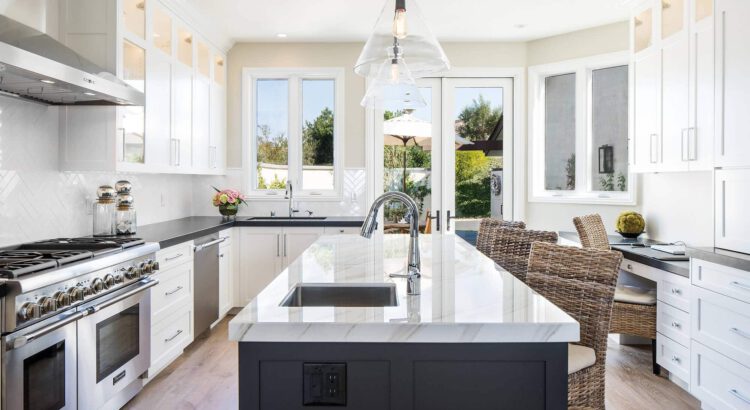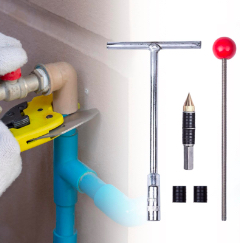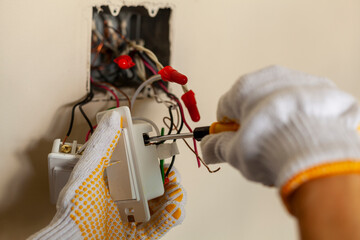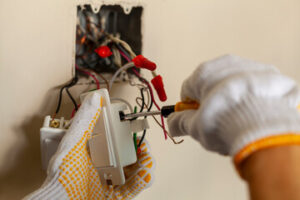Plumbers Bossier City install and repair the pipes that carry water, waste, and gases throughout homes and businesses. These technicians must have strong mechanical skills and be comfortable working in tight spaces.
They also must be able to read and understand blueprints to install plumbing systems properly. In addition, they must be familiar with local building codes and regulations.

Plumbers install piping and plumbing fixtures such as sinks, toilets, showers, and water heaters. They may work on residential, commercial, or industrial sites. Residential plumbers typically focus on installing and repairing plumbing systems in homes and apartments. This can include examining pipes, assessing damage, and recommending plumbing solutions. They also work with customers to ensure their satisfaction with the work and its related costs. Plumbers often work in confined spaces and may need protective gear to prevent injury.
Plumbers also work with other professionals, such as engineers and construction teams, to seamlessly integrate plumbing systems into building projects. This can involve interpreting blueprints and plans, ensuring compliance with local and state regulations, and obtaining necessary permits. Plumbers may also be responsible for testing and certifying plumbing systems. They use various tools and materials to perform installation tasks, including copper, PVC, and PEX pipes.
Plumbing systems are essential for water distribution and waste management in buildings. They provide clean drinking water, regulate indoor climate, and ensure the safety of occupants by removing and disposing of waste. Plumbers are responsible for maintaining and repairing these important systems, ensuring they are efficient and functional.
Many different plumbing systems exist, each designed to meet the specific needs of a particular building or set of conditions. For example, a high-rise apartment building will likely require a more complex plumbing system than a single-family home. Some systems are also designed to be more energy efficient than others. For instance, a low-flow toilet can significantly reduce the water used in a bathroom.
Plumbers must have excellent critical thinking and problem-solving skills to assess and repair plumbing problems. They must be able to weigh options and make decisions that balance cost, time, and efficiency. They must also have strong written and verbal communication to relay plumbing issues and recommend solutions to customers. They often need to describe the nature of the problem, explain why it is occurring, and outline potential solutions. This is especially important when working on large, complicated systems, such as those in hospitals and industrial settings.
A plumbing system is essential for providing clean and safe water in residential, commercial, and industrial environments. Plumbers maintain these systems by installing, repairing, and maintaining pipes and fixtures. They also ensure that unblocking drains and sewer lines safely dispose of sewage. In addition, they are often called on to troubleshoot issues with water heaters, dishwashers, and washing machines.
Plumbers must have excellent analytical and problem-solving skills to diagnose and repair issues quickly. They must also be comfortable working in tight spaces and with various tools and materials. Sometimes, they may be required to work on-call and respond to emergencies outside normal business hours.
Some common plumbing problems include leaking showers, clogged toilets, and running drains. Whether these issues are minor or major, plumbers must be able to resolve them quickly and effectively. This requires them to have strong communication skills and be able to listen to customers’ concerns. It is also important for them to know how to use advanced tools and equipment like plumbing software, which can help them improve service delivery and track progress.
While most of us think of residential plumbing services, these professionals are also responsible for maintaining the plumbing systems in office buildings, schools, hospitals, and other large public or private facilities. These systems have larger water supply lines and more complex plumbing fixtures and appliances than residential ones. In addition, they must be able to meet stricter building regulations.
In this setting, plumbers often collaborate with other professionals, such as construction teams and architects, to ensure the plumbing is seamlessly integrated into the building’s infrastructure. They also must be able to work with a wide range of materials, from metals like copper and steel to plastics and vinyl. In some cases, they may even be responsible for installing fire sprinklers. Due to the complexity of these systems, they require a greater level of skill and expertise than residential plumbing.
Plumbing systems remove waste, provide hot and cold water, and regulate indoor climate. They are vital to our everyday lives and the smooth functioning of residential, commercial, and industrial spaces. Plumbers are skilled tradespeople who install, repair, and maintain these systems. Plumbers usually work as employees of plumbing companies, but some are self-employed contractors. Their job duties include installing and repairing garbage disposals, toilets, showers, and faucets and resolving plumbing issues in homes and businesses.
Some common plumbing problems that require repair are clogged drains, leaking pipes, and broken water heaters. Plumbers can promptly fix these problems for homeowners and business owners to minimize damage and prevent further inconveniences. They also inspect plumbing systems to identify and diagnose potential issues.
In addition to repairing pipes, plumbing fixtures, and appliances, plumbers can install new ones. They use tools to run diagnostic tests on pipes, assess the condition of fixtures and appliances, and determine if any parts need to be replaced. They also ensure that plumbing systems meet local and state codes before installation.
Most plumbing issues are not easy to solve for a homeowner, especially if they need to be addressed immediately. These problems can lead to serious consequences for the health and safety of a family or business. That’s why it is important to have a reliable plumber nearby in case of any emergency.
A good plumber can save a homeowner or business owner a lot of money and headaches in the long run. They can help them avoid costly repairs and improve the efficiency of their plumbing system. Sometimes, it is cheaper for them to hire a plumber than to buy and install new equipment.
Plumbers are skilled professionals knowledgeable about all aspects of plumbing and sewage systems. They have extensive experience working in residential and commercial spaces. They are capable of handling a wide variety of plumbing issues and have the necessary stamina to perform challenging physical labor. They also have excellent communication skills and can explain complex technical subjects in simple terms. In addition, they can effectively collaborate with other people in a team.
A plumber inspection is an opportunity for a homeowner to get a detailed look at their plumbing. A visual inspection includes checking the water and sewer fittings for signs of leaks, rust, or damage. This also includes checking all fixtures and appliances like sinks, showerheads, toilets, and water heaters.
The plumber will check each fixture for proper operation, including the water flow rate and any issues with water pressure. In addition, the plumber will inspect all the drain lines for clogs and any signs of leaks. The plumber will also check the water heater for signs of rust or other performance issues.
Plumbing lines run through a home’s walls, floors, and ceilings to connect all the water fixtures and appliances. Problems with these lines are sometimes difficult to spot, especially if hidden behind walls or under floorboards. In these cases, a plumber can recommend a camera inspection. This type of inspection involves feeding a high-resolution camera through the pipes to find the source of any problems.
Leaks are a common plumbing issue that requires immediate attention. Plumbers can use various methods to locate leaks, like visual examination, applying soapy water to joints, or using electronic acoustic detectors. Once a leak is found, the plumber can repair it and ensure no further issues.
Other plumbing problems that plumbers inspect for include corroded or damaged pipes, drainage and venting issues, and code violations. Pipes that aren’t supported properly or that have long vertical runs without support can collapse or break. Plumbers will check for these issues and verify that all pipes meet appropriate size standards.
Drain and venting issues can lead to several problems, including slow-draining tubs or toilets, gurgling sounds, and even sewage backups. Plumbers will check all drain lines for clogs and proper slope and test all vents to ensure they’re clear of obstructions. Plumbers will also examine the water heater for signs of rust or sediment buildup and ensure that it has an adequate pressure relief valve.





 As the name implies, residential electricians work on electrical systems in homes and other buildings.
As the name implies, residential electricians work on electrical systems in homes and other buildings.